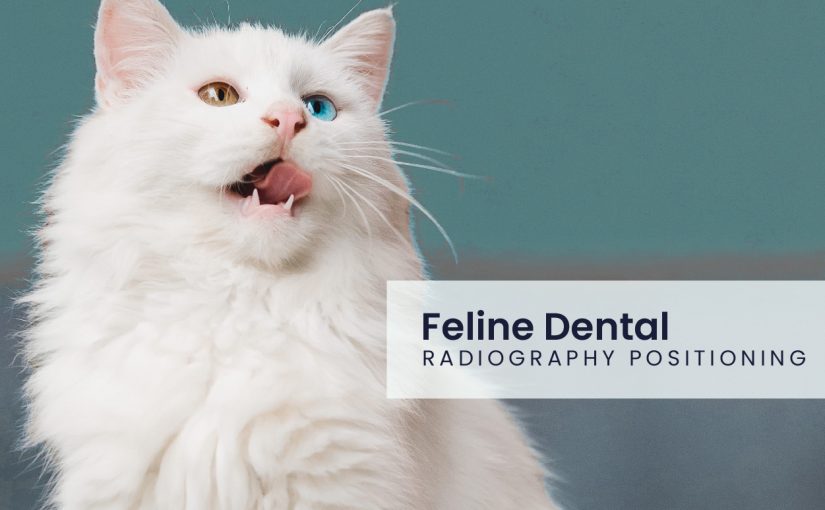Why is dental radiography essential?
Dental care plays a major role in overall health and quality of life, but only a small portion of the teeth are visible.
In a lot of cases, early signs of dental disease are situated below the gum line, and if detected quickly it can significantly improve patient outcomes when it comes to common dental diseases.
This has clear benefits in terms of treatment costs and the overall impact of dental disease on pets. Indicating the importance of dental radiography and overall pet health.
With this positioning aid our aim is for you to get the very best out of your dental radiographs.
Download a printable PDF guide here.
MAXILLARY INCISORS & CANINES
- Place the patient in Sternal recumbency, head slightly elevated, maxilla
parallel to the table. - Position the plate in the mouth as parallel to the palate as possible.
- Place the incisors on the edge of the plate.
- Aim the tube head at the teeth and tilt at a 70° angle to the plate.
- If the apex of the canine is superimposed over the premolars, angle the tube
head as above AND 20° laterally to the sagittal plate.

Maxillary Premolars
- Place the patient in sternal recumbency, head slightly elevated, maxilla
parallel to the table. - Position the plate as parallel to the palate as possible.
- Place the premolars on the edge of the plate.
- Aim the tube head at the teeth at a 45° angle to the plate
Maxillary Premolars (Acute Angle)
- To be used to reduce zygomatic arch interference (roots to appear elongated)
- Place the patient in sternal recumbency, head slightly elevated, maxilla
parallel to the table. - Position the plate on the patients’ palate
- Aim the tube head over the arch to be radiographed and tilt at 37/40° angle
to the plate.

Mandibular Molars (Lateral Parallel Technique)
- Place the patient in lateral or dorsal recumbency with the teeth to be
imaged face up. - Position the plate parallel to the teeth and tooth roots on the lingual surface
of the mandible/teeth. - Angle the tube head perpendicular to the plate and teeth.

Mandibular Mesial Premolars
- Place the patient in dorsal recumbency.
- With their head fully extended, place a rolled up towel under their neck to
keep the mandible parallel to the table. - Position the plate as parallel as possible to the mandible.
- Place the premolars on the edge of the plate.
- Aim the tube head at the teeth and tilt at a 45° angle to the plate.

Found this helpful?
Download our printable PDF guide here
Read Related Article:


